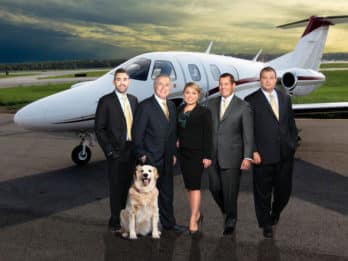The FAA’s Myth About Wake Turbulence at Flight Levels Debunked
The myth about wake turbulence at flight levels debunked. The FAA says that its ok for heavy airplanes to overfly small airplanes while at flight levels and they need not worry about severe turbulence from the wake upsetting the smaller aircraft..
That of course is how the United States adopted RVSM airspace which reduces the altitude clearance between aircraft operating in different directions above 27,000 feet to 1000 feet instead of the old 2000.
So under these new rules an airplane weighing a million pounds can overfly an aircraft weighing just 6000 pounds and according to the FAA no sweat.
Now that was until a Challenger business jet, weighing in at about 60,000 pounds encountered the wake from an Airbus 380 in the Middle East, rolled upside and lots of other ways before the crew could regain control. They landed safely but the airplane was trashed.
So the FAA addressed the problem and now Controllers give pilots a wake turbulence caution as they permit the same passage of million pound aircraft 1000 feet above a 6000 pound airplane. That caution of course is meaningless because what’s the pilot of the little airplane to do start writing his will?
Case in point.
Today I flew my Eclipse Jet for the more than 150th time across our great country. It weights 6000 pounds soaking wet. As I sat there over Missouri at Flight Level 370 contemplating the New Year’s Eve coming, the shadow of a very large aircraft loomed above me. It was a Quantas Boeing 787 that had overtaken me at Flight Level 390. Now I would say the Boeing 787 weighed in at about 600,000 pounds but what’s a few hundred thousand pounds more or less?
When I saw it and did the numbers quickly I asked the controller for a vector to avoid wake turbulence. He graciously gave me a ten degree right turn. That looked good to me.
After my TCAD showed the Aussie about 15 miles ahead of me, I requested a climb to Flight Level 390 in the hope that at that altitude it would be less likely for that to happen again.
As I approached Flight Level 380 and about simultaneous with a “Caution Wake Turbulence “warning from the controller, my airplane began to shake violently like some invisible hand was playing “Jingle Bells” with it as it rolled violently from side to side at least 30 degrees.
I looked at TCAD again in disbelief as the 787 was more than 15 miles away and regained control of my airplane and myself. The Controller and I discussed it as he was also in disbelief exclaiming that the Quantas airplane was 200 knots faster than I was in my climb and 20 miles away when the encounter occurred.
Lessons learned. RVSM safety is a fiction. Wake turbulence is not confined to the FAA’s long standing safe distance behind rules like 7 miles maximum even behind a landing Boeing 757. Dangerous wake turbulence is not confined to landing aircraft with their flaps down.
Dangerous wake turbulence can be experienced even 20 miles behind and 1000 feet below heavy aircraft. Even a vector away can be insufficient as after 15 miles the wake often spreads wide enough to encompass a large area not just the wingspan of the generating aircraft.
Add this one from actual experience. Some weather and wind conditions allow the wake from the larger aircraft to remain at the same altitude for many miles and there may be no safety to fly behind a larger aircraft at the same altitude.
Take my words for this one, today’s real life lesson is one that is important.
Keep an eye on your TCAD or ADS-B to see what kind of aircraft will overtake or fly over you with only a 1000 feet between you. If its big, take a vector and put 20 miles between you and the larger aircraft.
If you decide to climb to the altitude of the airplane that overtook you, wait until it’s at least 25 miles ahead and still fly the vector for the climb. If it’s a super heavy airplane like an Airbus 350, Boeing 787, Boeing 747 or Triple 7 or an Airbus 380, good luck!
I’m happy to be able to write this article tonight because if the 787 had overflown me at 1000 feet I’d likely not be so lucky!
Arthur Alan Wolk
New Year’s Eve 2019




